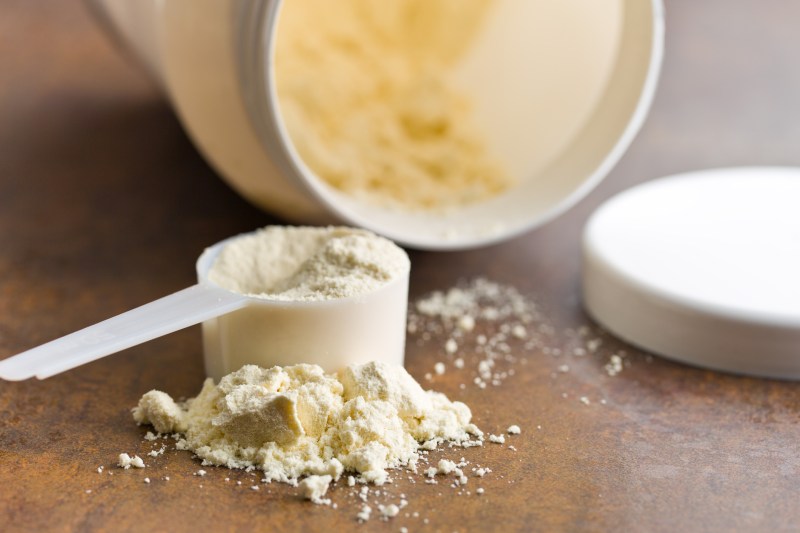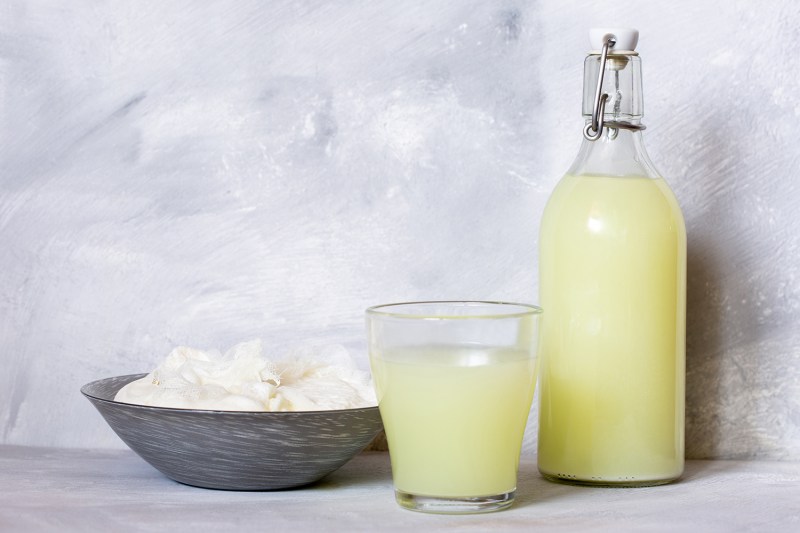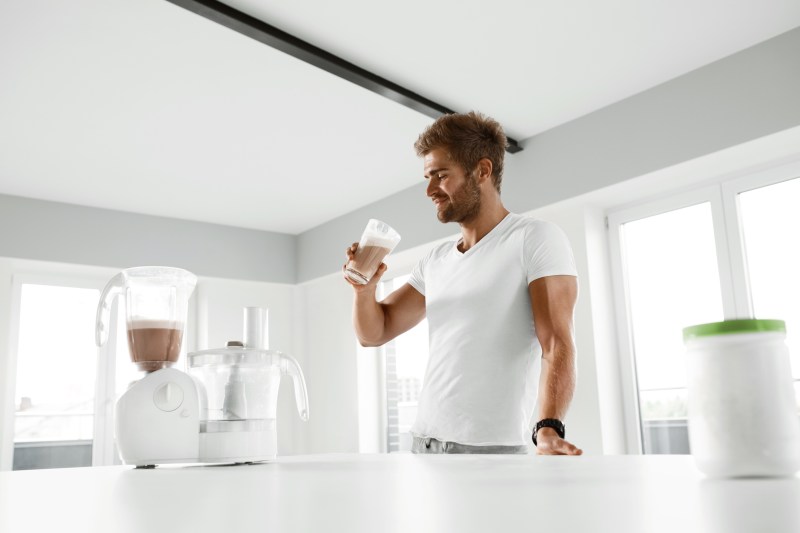
Related Guides
What is a protein?
To better understand whey protein, we’ll have to start small. At the molecular level, to be exact. Protein is a molecule made up of even smaller components called amino acids. This macronutrient is what our body uses to build muscles, organs, enzymes, and other essential structures. Consequently, proteins that provide all the essential amino acids (of which there are nine) are the best kinds. This is where whey protein comes in.
How is Whey Protein Made?

Whey protein is actually a byproduct of the cheese industry, which means it’s a milk-based protein. Milk contains two proteins called casein and whey, and the latter is the powdery product you’ve seen in vitamin stores and on TV fitness commercials. When cheese curdles (taking casein with it), the leftover liquid is what’s known as whey. It’s then isolated, processed, and packaged in various forms. Quickly absorbed, commercially available, and relatively affordable, it’s no wonder whey protein is such a prominent member in fitness circles.
Let’s keep in mind though that the three whey protein categories (isolates, concentrates, hydrolysates) vary in terms of how much protein they provide, what other ingredients they possess, and how easily/quickly they’re absorbed into the body. Whey protein isolate is up to 90% protein and is typically devoid of extra carbs, fats, lactose, and cholesterol. Whey protein concentrate is a common ingredient in products besides protein powder and provides up to 80% of protein by content. Hydrolyzed whey protein is absorbed very quickly and easily by your body.
How Much Whey Protein to Take?

If you want to supplement a high-intensity workout regime without drastically increasing your calorie intake and in the process gaining more fat than you’re losing, try whey protein. It’ll help burn fat and build lean muscle more quickly than you would otherwise. Or, if you’re protein-deficient due to a dietary lifestyle change or are just not meeting your protein needs, whey protein is an easy way to boost your intake.
But how much of it do we actually need everyday? Experts recommend sourcing 10% to 35% of your calories from lean protein. This means if you’re on a 2,500-calorie diet, you’ll need 250 to 875 calories’ worth of protein. A tub of whey protein usually comes with a scoop that allows you to portion the right amount into a cup of water or your daily smoothie. The exact amount varies by brand, but the average lies between 25 to 50 grams daily.
Experts also maintain that you might take 0.8 grams of protein per kilogram (~2.2 pounds) of your weight. This might be a more practical guideline if you’re not necessarily training for a bodybuilding contest and just want to meet your dietary needs like the rest of us.
When to Take Whey?

The exact time depends on whether you’re taking protein to build mass, to lose weight, or to supplement your diet. Protein enthusiasts hold very strong opinions about when to drink a shake for the best results. However, the general consensus is within an hour after your workout. Taking advantage of this time frame gives your body sustenance after working hard to complete your routine. As a result, your muscles rebuild themselves stronger and thicker.
If you’re taking protein to lose weight, you might find that drinking a protein shake in the morning or in between meals is a useful, hunger-curving trick. Protein is lauded for making you feel full, and staving off unhealthy cravings you might be struggling to shake at the start of a dietary transition. The good news is that whey protein is also found in equally tasty things like protein bars and even cereal. Moreover, whey makers are working overtime to come up with appetizing flavors like cinnamon-flavored cereal, chocolate chip cookies, and pancakes with syrup drizzled on top.
What are the Pros and Cons of Whey Protein?
As with anything that’s meant to be good and healthy for you, some products are better than others. Powder supplements often have additives like sugar, artificial sweeteners, and caffeine. Granted, these are common ingredients that are typically harmless, but in large quantities can be problematic.
Other possible side effects are weight gain, digestive issues, nausea, and kidney or liver problems. However, these effects are prevalent in people who take large doses or in people who have health conditions prior to taking whey protein. In any case, consult with a dietitian or your general physician if you have more complex circumstances.
Despite these possible negative reactions, there are very remarkable positives to taking whey protein supplements. These include developing a more robust immune system, lowering cholesterol levels, multiplied energy during physical activity, inhibiting cancer growth, and improving cardiovascular health.
What are Alternatives to Whey Protein?
Though whey powder contains very little lactose, your stomach might still reject it as a supplement. Fortunately, there are various equally effective protein products on the market.
- Egg protein
- Pea protein
- Goat milk protein
- Soy protein
- Brown rice protein
Another option might be to incorporate whole proteins into your diet, including fish, lean meat, and legumes. The bottom line is that not all whey protein is equal, and others may be calorie-heavy, others may be digestion-friendly, and others may be cholesterol-free. Supplements aren’t the end-all and be-all of weight loss, muscle sculpting, and a healthy diet. They’re great company for the process, though, and can help you achieve your goals faster in a safe, tried-and-true way.



